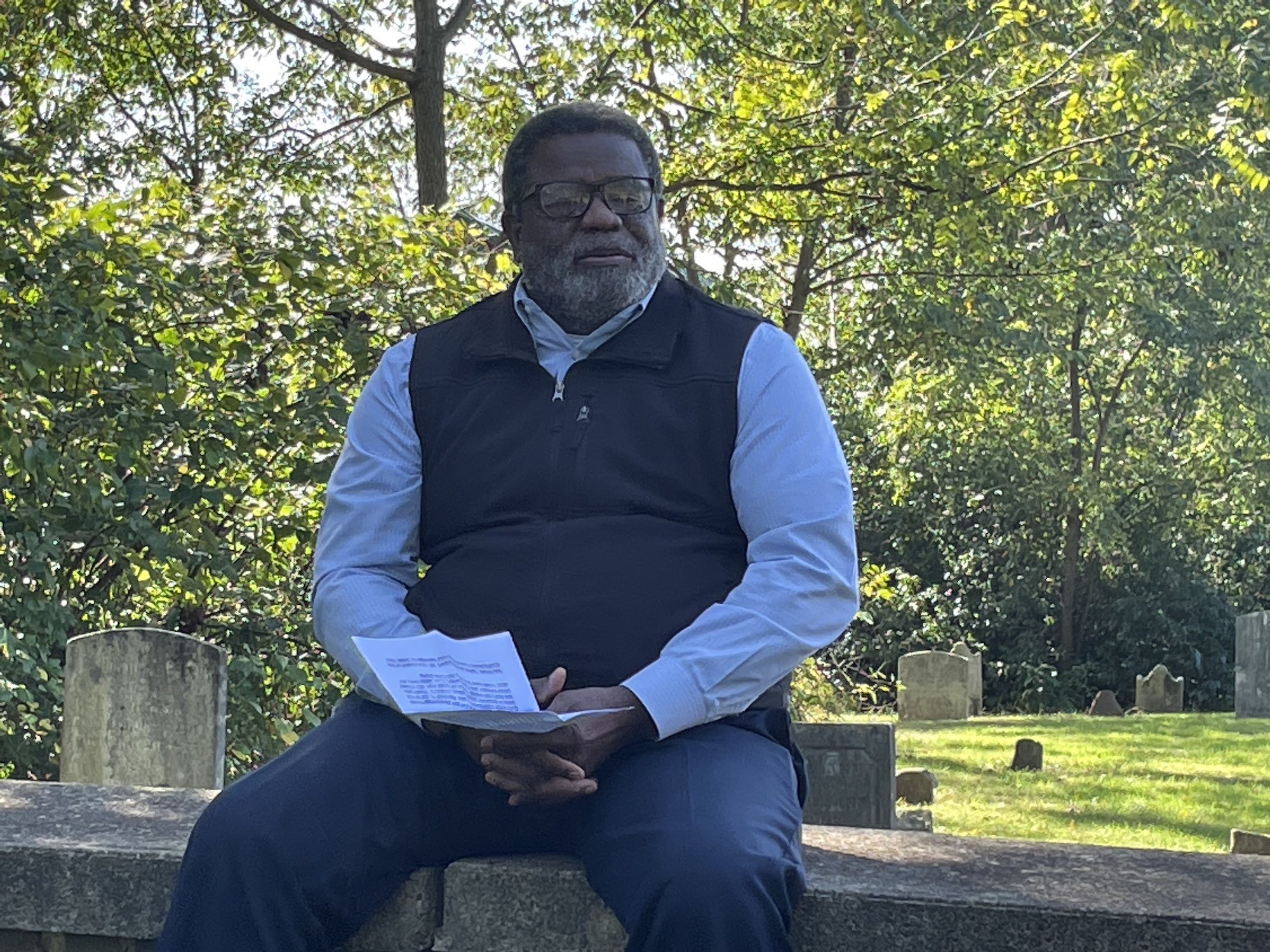Historical Marker Unveiled at Nixon Cemetery
On Saturday, October 2nd Quakertown Friends Meeting held a dedication ceremony for an historic marker that honors the Nixon Cemetery, a burial site for non-Quakers that the Meeting offered to the community starting in 1764. The sign also acknowledges the now forgotten site, across the road, of a former cemetery for enslaved Africans, also founded in the mid-1700s, but destroyed before the 1880s.
Pat Stover, Clerk of Quakertown Meeting, presided over the event that about thirty people attended, and introduced the three speakers: Marty Campanelli, local historian, author, and lecturer, detailed the history of both cemetery sites; Leslie Leith, a Hunterdon County Historical Society Cemetery Committee member, spoke about the value of old cemeteries, problems with their preservation, and possibilities for their future; Bill Taylor, a Flemington resident since 1985 and a member of Grace United Church for Christ has served on numerous boards of local non-profit organizations. He spoke on the importance of remembering the humanity of the enslaved Africans whose burial sites had not been preserved (or had been desecrated) over time, and challenged the audience to always choose togetherness over segregation, in life and in death.
Afterwards, guests were treated to an assortment of home-baked cookies, apples, cider and other refreshments at the First Day School adjoining Quakertown Friends Meeting.
The Nixon Cemetery, located a half mile south from the center of Quakertown, is now inactive, having had no new burials since about 1920. McPherson, Trimmer, Cronce, Nixon, and Opdyke are frequent names found inscribed upon the time-worn headstones. The low stone wall out front is now enhanced by a blue historic marker bearing the Franklin Township seal and an inscription that reads:
Nixon Graveyard: Established 1764 by Quakers as burial site for non-members of their Society. In mid-1700s, a cemetery for enslaved Africans was sited across the road. By mid-1800s the slaves’ stones were torn out and the graves plowed over.
The only published reference to the former slave burial site can be found on page 441 in James P. Snell’s 1881 The History of Hunterdon and Somerset Counties. The section on Franklin Township was researched and written by Egbert T. Bush, a local historian at the time of the book’s publication. Mr. Bush wrote: “There was once a colored people’s ground in what is now J. L. Nixon’s field, about 100 yards northwest of his house. It is said to have been the place of burial for the early slaves of this vicinity.”
The Nixon farm, situated across the road from the Nixon Cemetery, is now a small development of houses, but the original farmstead still remains. A grove of trees alongside the road is the approximate location of the slave burial site. No documentation exists to inform us of who these slaves were and their descendants have no way of knowing where they were interred. A quote from Sandra A. Arnold of the National Burial Database of Enslaved Americans, who wrote in an op-ed in the New York Times in 2016, seems like a proper eulogy for these forgotten people: “Regardless of our country’s history or our ambivalence about the memory of slavery, we can choose to remember the enslaved—the forgotten. They offer our contemporary society examples of resilience and humanity. Preserving their memory contributes to our own humanity.






